Petunias have been grown as ornamental plants for generations, and they’re prized for their showy, trumpet-shaped flowers that come in almost any color you could imagine. Wave petunias are a hybrid type petunia plant that was developed in the mid-1990s, and they’ve taken the gardening world by storm since their release. Cold hardy and vigorous, Wave petunias grow larger than many other petunia varieties, and they flower more abundantly, too.

But while Wave petunias are prolific bloomers, if you want to get even more flowers out of your Wave petunia plants and enjoy their colorful blooms from spring through fall, there are certain steps that you can take. In this guide, we’ll teach you 8 simple tips that will help you get more Wave petunia flowers and grow healthier plants as well!
Jump to:
8 ways to keep wave petunias blooming
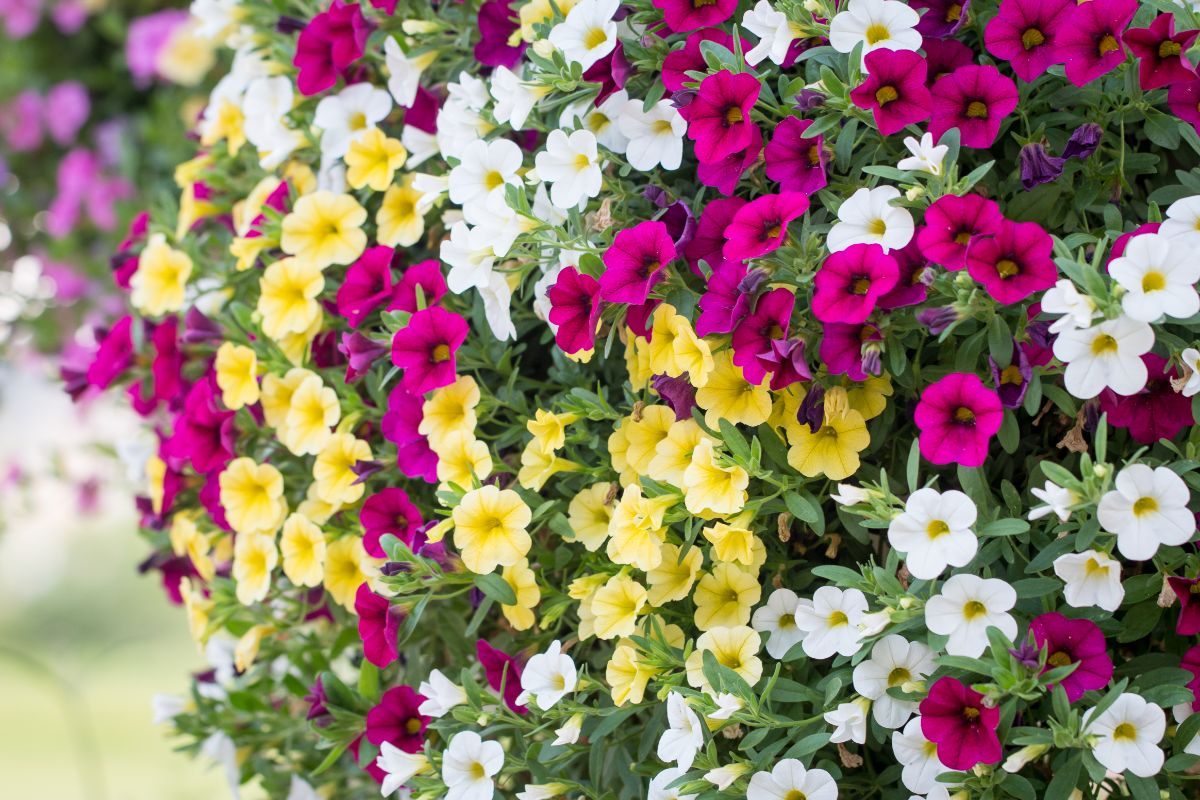
Happy petunias produce more flowers, so if you want to make Wave petunias flower more, you’ll need to provide your plants with the proper balance of light, water, and nutrients. Beyond that, a well-timed pruning and deadheading can also refresh the look of your plants and make petunias grow more leaves, branches, and flowers. Follow along with the care tips below and grow healthier and more prolific Wave petunias in flower gardens, porch planters, and hanging baskets!
Tip: While these care tips work well with Wave petunias, they can be applied to other petunia varieties, too!
1. Choose the right pot.
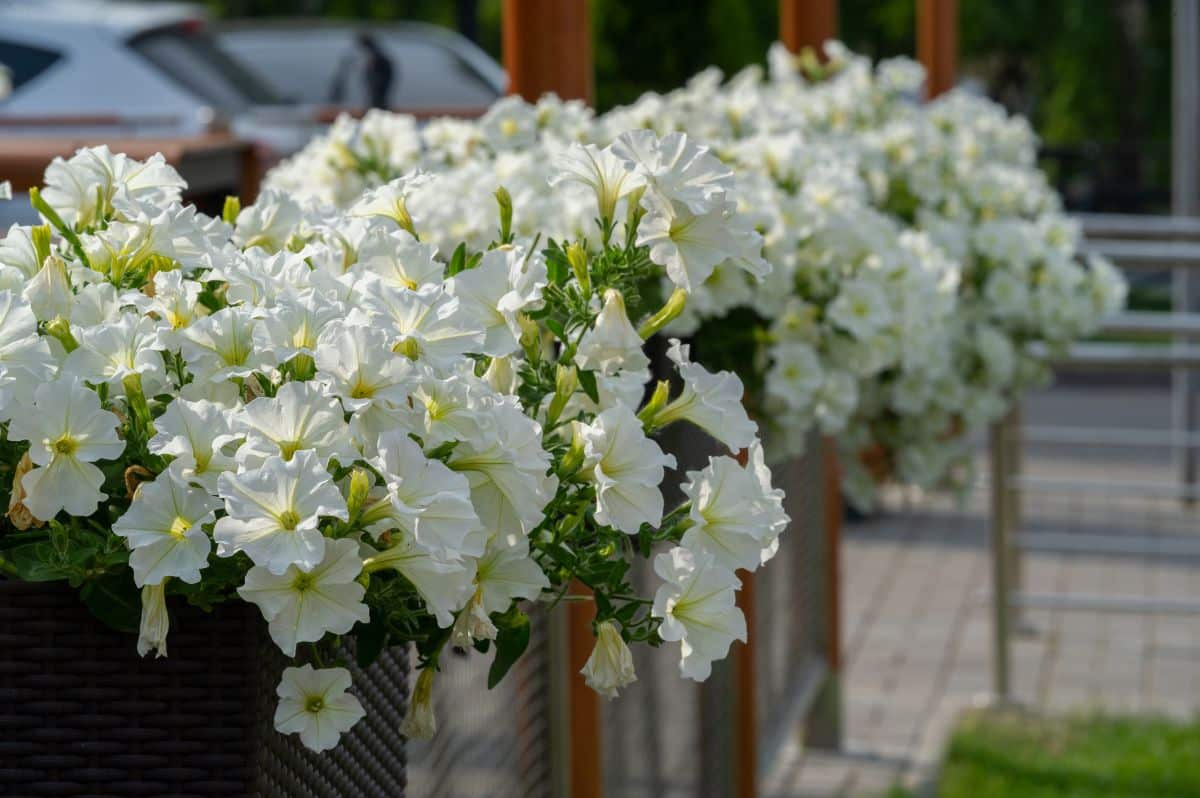
Wave petunias come in three main varieties: mounding, spreading and trailing. But regardless of what type of Wave petunia you’re growing, you’ll need to ensure your plants have adequate room to grow. After all, plants with healthy root systems will flower much more abundantly!
If you keep Wave petunias in inground garden beds, you won’t need to worry much about their roots becoming cramped. However, if you’re keeping your plants in porch planters, pots, or hanging baskets, be sure to select growing containers that are at least 10 to 12” in diameter. Pots of this size can hold up to 3 wave petunia plants, but you will want an even larger pot if you plan on keeping more than 3 plants together.
Aside from pot size, make sure you select pots with adequate drainage holes so that your plant’s soil doesn’t become overly waterlogged. If you have a pot without drainage holes, drill some of your own with a power drill and a masonry bit. But don’t be tempted to add rocks to the bottom of your pots to improve drainage… this can actually make soil stay even soggier!
Tip: If your container-grown petunias are growing very rapidly, you may need to repot your plants in midsummer. When repotting, choose a pot that is only 1 to 2 sizes larger than your original pot, as oversized pots often lead to overwatering and soggy soil!
2. Provide enough light.
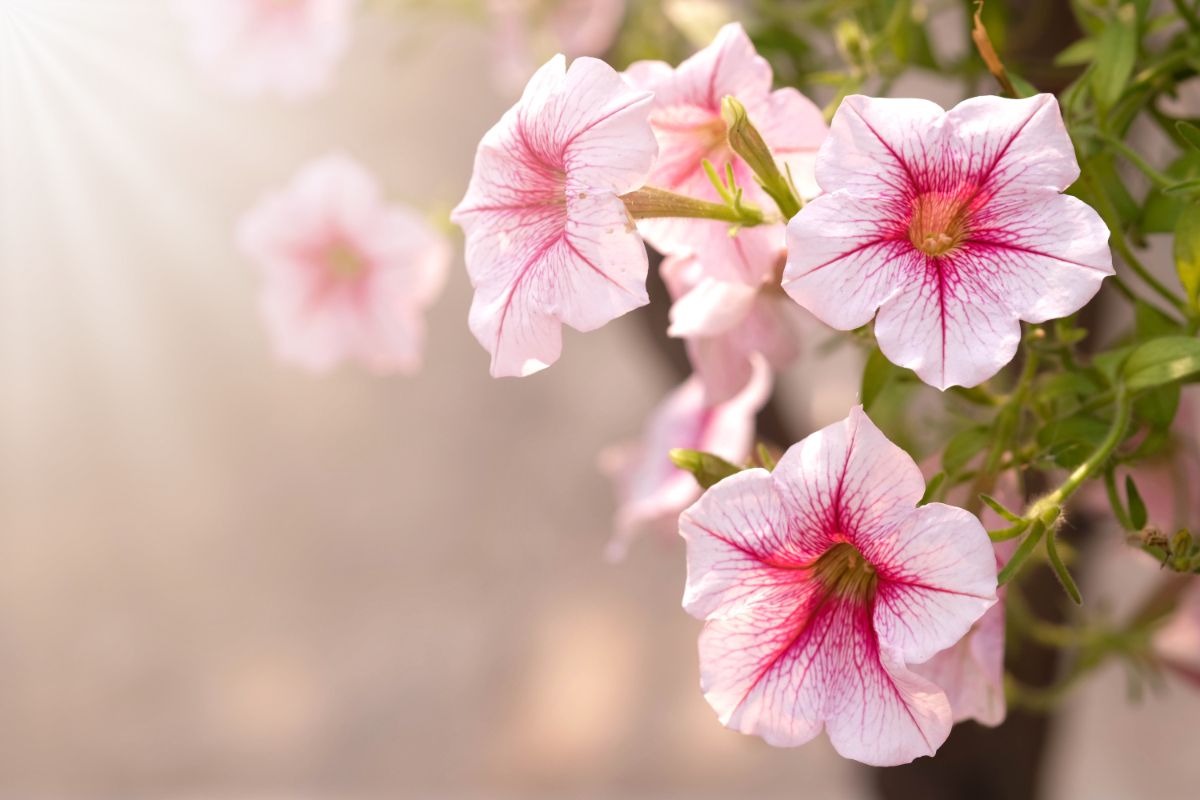
After your Wave petunias are all potted up in a nicely sized pot with a rich potting mix, the next thing you’ll want to consider is plant lighting. While Wave petunias can technically grow in part shade if you want your plants to produce the most flowers possible, poor lighting isn’t going to cut it!
For proper growth and optimal flowering, Wave petunias should be grown in a full sun location that receives at least 8 hours of bright light daily. If you’re growing petunias in hanging baskets on a front porch with a porch overhang, consider adding some extender hooks to lower your plant pots so they won’t be completely covered in the shade. Alternatively, if you’re growing petunias in porch planters, move your planters toward the front of your porch so they won’t be drenched in shadows.
And don’t worry one bit about Wave petunias getting too hot. These tough plants can handle sun and heat with ease, just as long as they get enough water!
3. Water often.
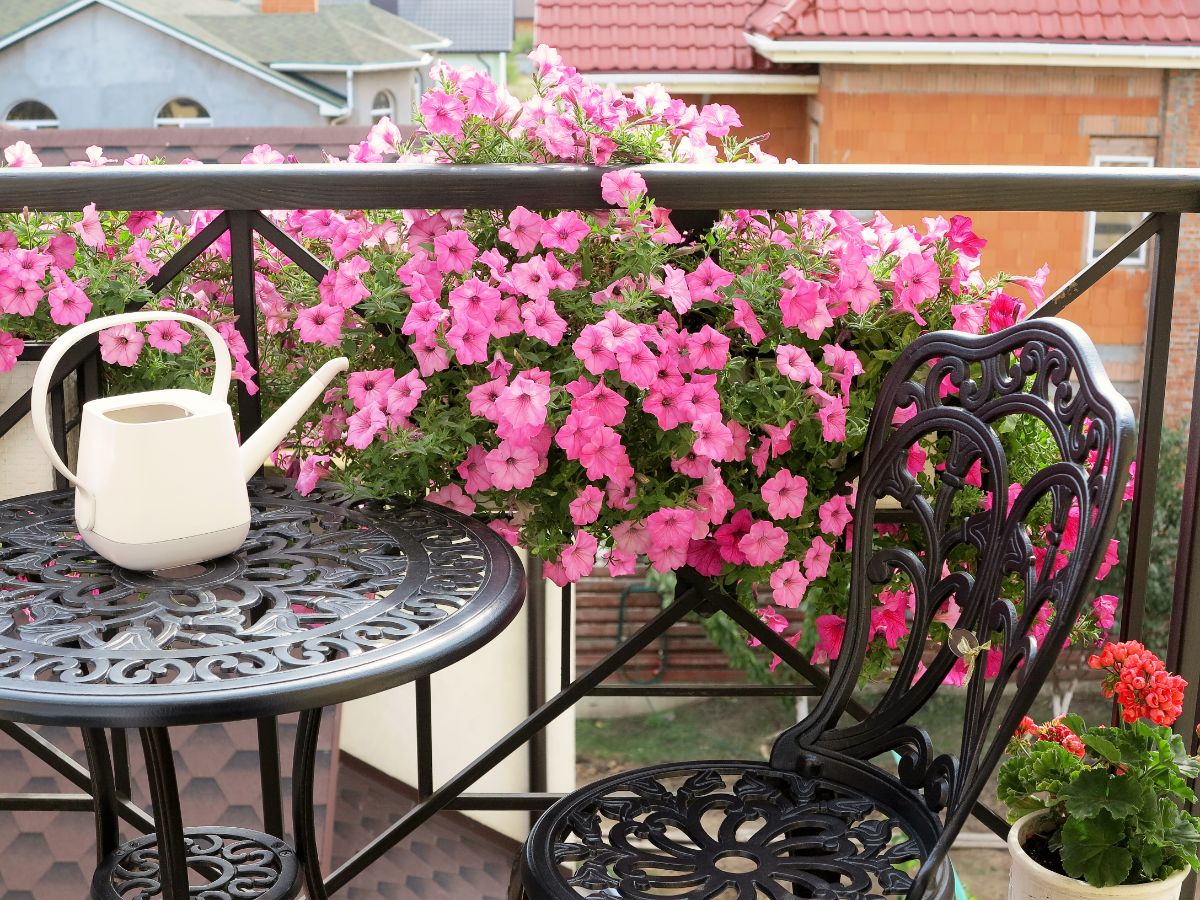
Aside from bright sun, Wave petunias also crave lots of water, so you’ll want to make sure your plants don’t dry out. While petunias can often bounce back if their soil gets a bit dry, underwatering can severely stress out plants and reduce flowering. And no one wants that!
Wave petunias should be watered approximately once every 7 to 10 days, although they may need more water in hot weather. You’ll know it’s time to water your Wave petunia plants when the top 1” of soil feels dry to the touch. Just be sure you don’t overwater your plants, as petunias kept in soggy soil can develop root rot.
If you often overwater potted plants and are worried that your Wave petunias may meet the same fate, consider investing in a soil moisture meter.
4. Fertilize regularly.
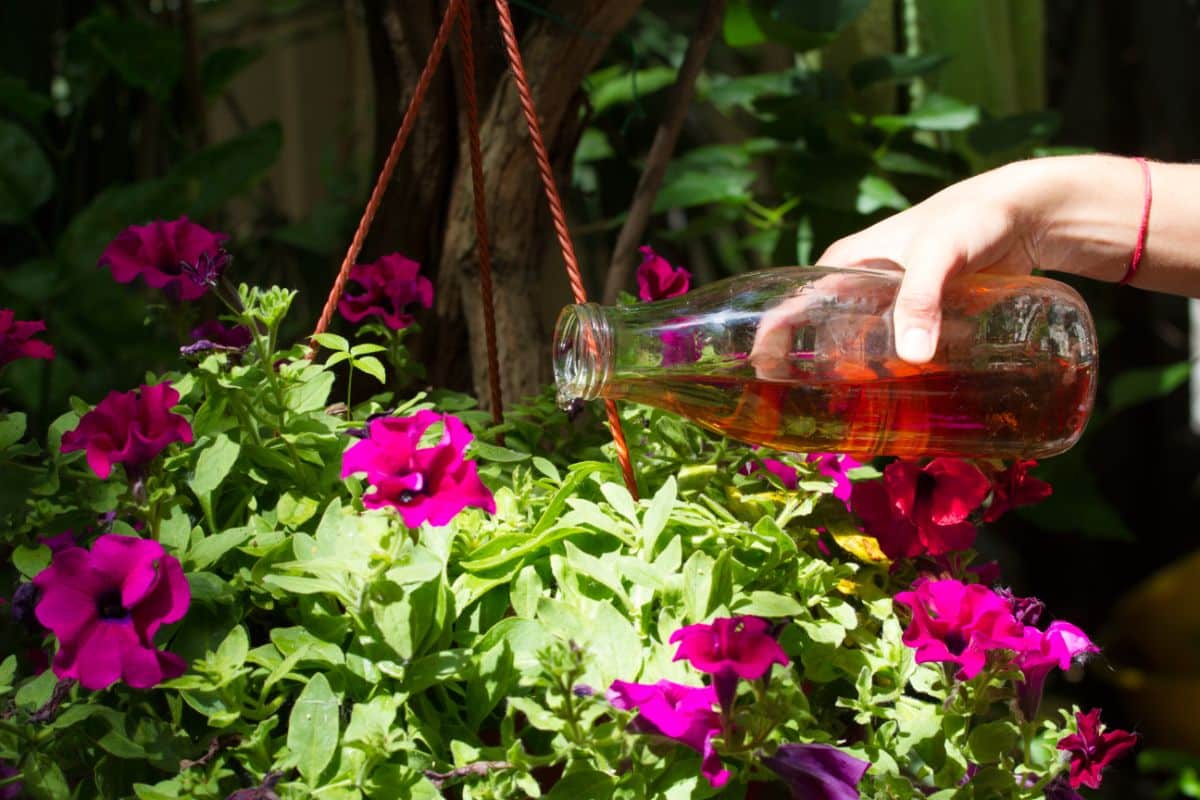
Many ornamental plants are light feeders, and they don’t need much fertilizer. But not Wave petunias. Like other petunia plants, Wave petunias are heavy feeders, and they will need to be fertilized regularly if you want to increase blooming.
When you’re first potting up your Wave petunia plants, consider mixing some worm castings or compost in the planting hole. These products will act as slow-release fertilizers, slowly contributing nutrients to petunia roots as they grow.
But even with added compost, potting mixes can become depleted throughout the growing season, which is why you’ll also want to dose your petunias with a quality, liquid organic fertilizer. For best results, choose a well-balanced liquid fertilizer and dilute it to half-strength to ensure it doesn’t overwhelm your potted plants. Then, apply the fertilizer about once every 10 to 14 days throughout the growing season.
Many liquid fertilizers will work on Wave petunia plants, including liquid kelp and fish emulsion. But for a homemade option, you may also want to try out worm casting or compost tea!
5. Add mulch.
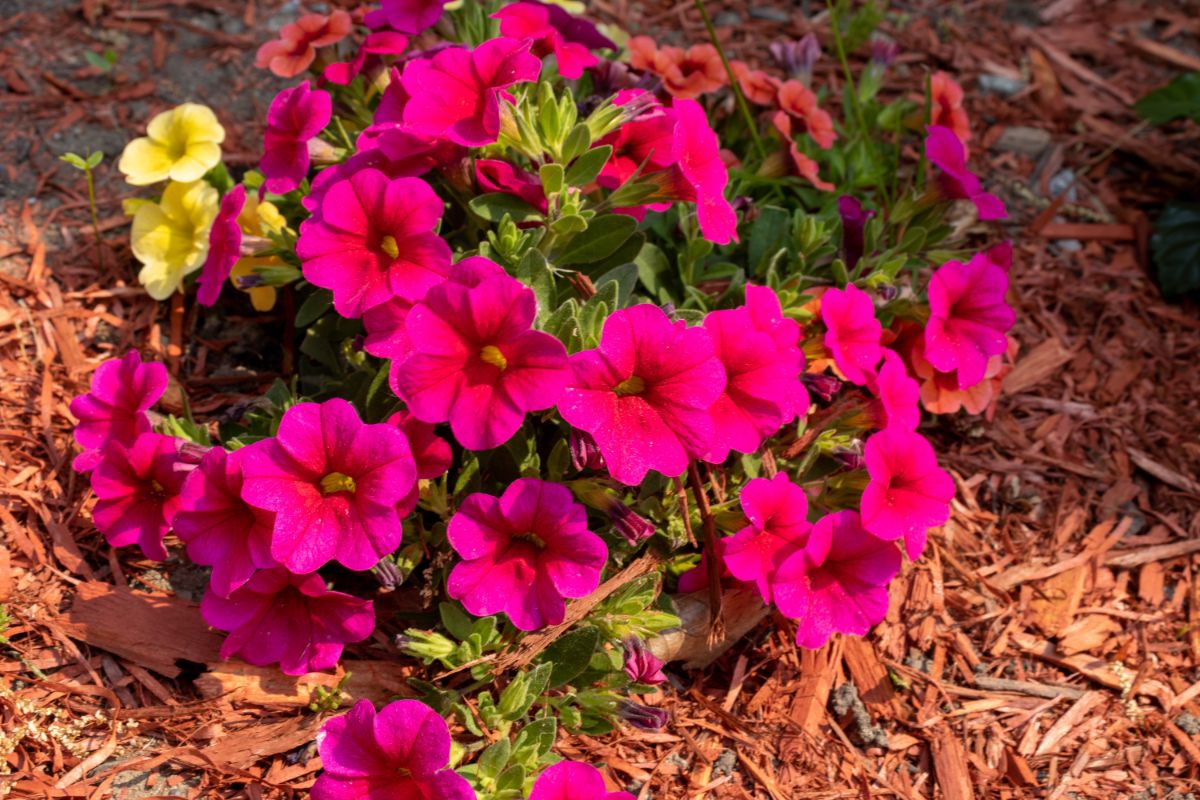
If you’re keeping Wave petunias in hanging baskets, you may not have room for mulch. However, if you’re growing your petunias in flower beds or large planters, mulch can be a great add-on to try.
Aside from being attractive, mulch helps lock in soil moisture levels so petunias won’t dry out as quickly. On top of that, a thick, 1 to 3” layer of mulch will also suppress weeds and reduce competition for nutrients and water in the soil. If you’re looking for quick and easy ways to give Wave petunia plants an advantage and boost blooming, mulching is always a solid choice!
Many different mulches will work with petunia plants, so the mulch you use will depend on what’s available to you locally and your personal gardening preferences. Wood and bark mulches are popular picks, but compost and pine needles can also be used as mulch, and they’re even more eco-friendly!
6. Prune stems from time to time.

Wave petunias don’t necessarily need to be pruned, but cutting petunias back from time to time can refresh their growth and help them grow bushier. What’s more, pruning also encourages plants to branch and produce more flower buds!
Depending on how fast your petunias are growing and your gardening style, there are several different ways to cut back Wave petunias. One option is to prune plants back by half in mid-summer, which will rejuvenate their growth and reduce plant legginess. However, this pruning style is quite severe, and it will temporarily reduce the blooms on your Wave petunia plants.
Another option is to prune Wave petunias back by ¼ every few weeks, or you can simply snip away 3 to 4 of the plant’s longest stems every week. These lighter pruning techniques will also promote branching and more flower production, but they won’t remove as many of the flowers on your plants. That means you can continue to enjoy your Wave petunia plants but also keep them looking fresh!
If even light pruning doesn’t appeal to you, you can simply pinch back leggy stems by 1 to 2” whenever your Wave petunia plants look a bit overgrown. This pruning technique is so quick you can do it when you’re watering your petunia plants once a week. And, even better, petunia stems are so tender you can easily pinch them off with your fingers… no tools required!
7. Deadhead spent flowers.
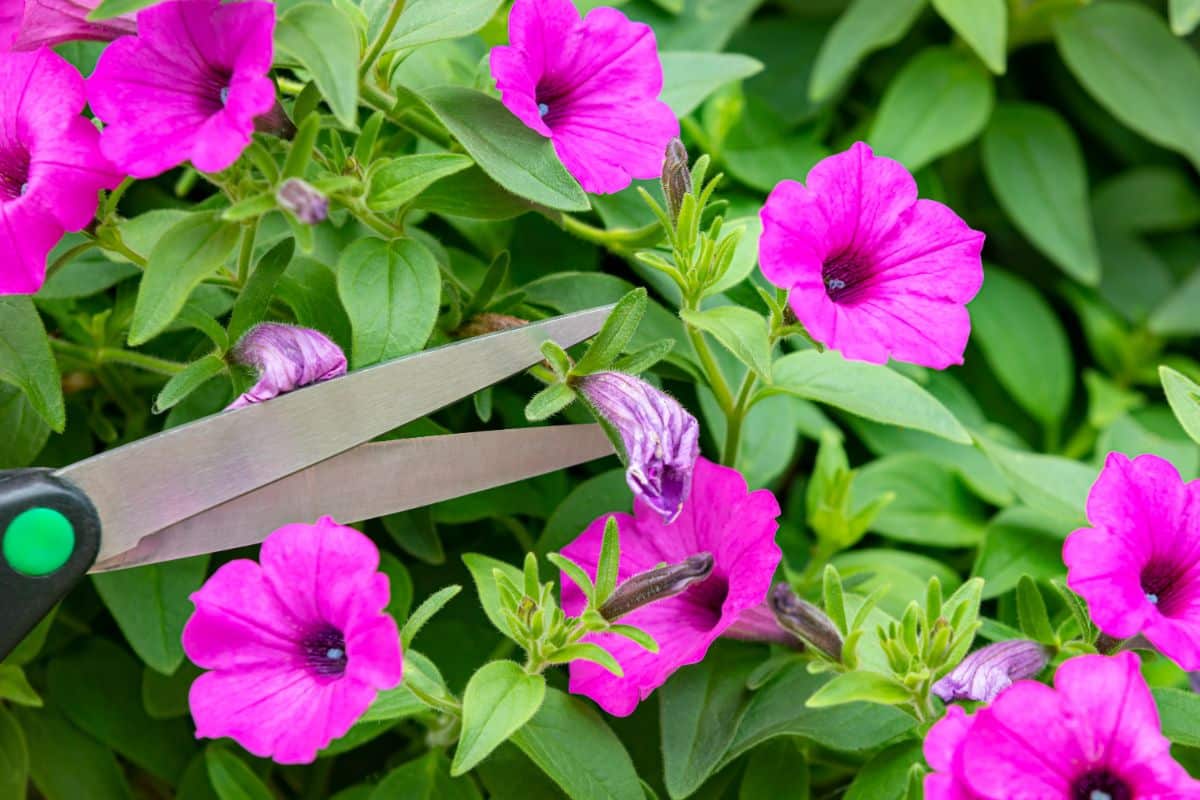
One of the perks of growing Wave petunias is that these hardy plants rarely need deadheading, and this can drastically simplify your petunia care regimen. However, if you want Wave petunias to produce tons of new flowers, deadheading is still recommended!
To deadhead petunia plants, simply pinch away old, spent flowers as soon as they start to look withered, floppy, or worn. It’s also recommended to pinch off the small stems attached to each of your petunia flowers, which will encourage petunia plants to branch out and produce more blooms. As with pruning, no tools are needed when deadheading petunias since their tender stems can be easily severed with just your fingertips!
8. Protect from cold.
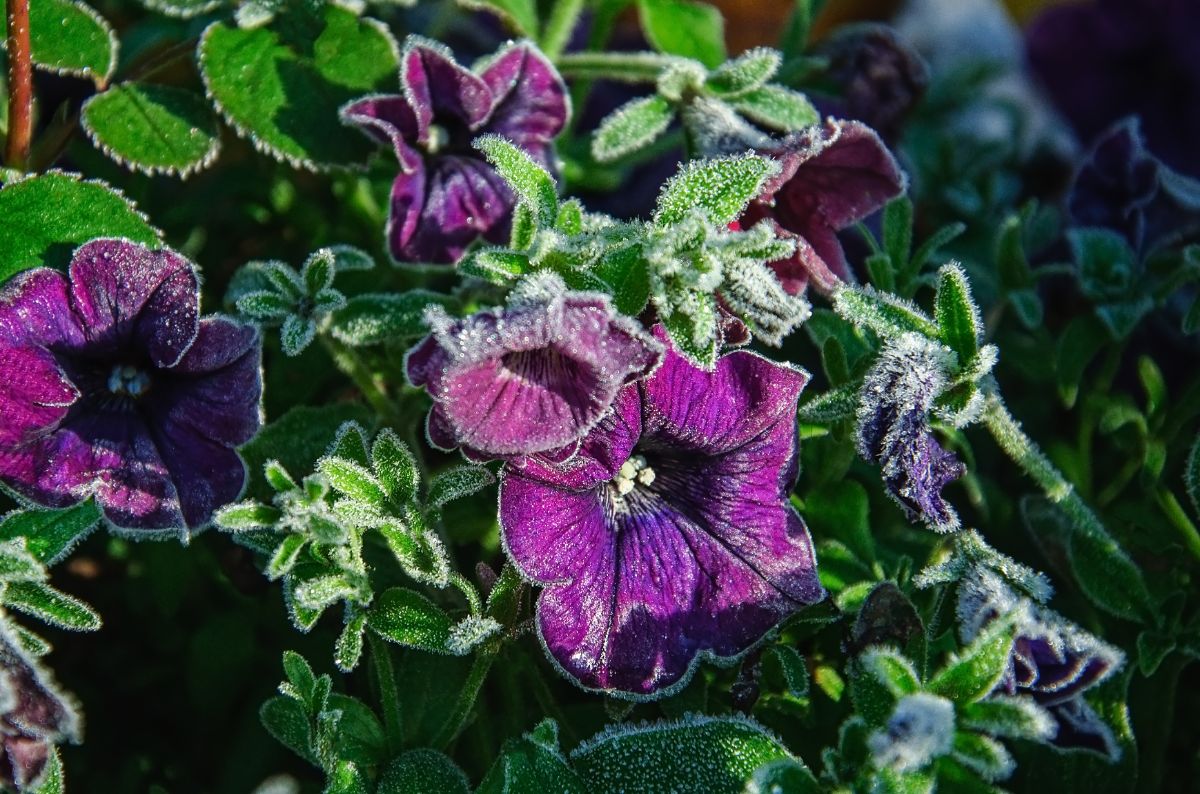
Wave petunias were specially developed for their cold resistance, and they are more cold hardy than other petunia varieties. However, these plants still can’t survive very cold temperatures.
Although you may be impatient to start growing petunias first thing in spring, Wave petunias shouldn’t be planted outdoors in spring until after the danger of frost has passed. Once established, these tough plants will continue to flower throughout the summer and well into fall, but they will die back when temperatures drop below 35F. That said, you can prolong your plants’ bloom time into fall by shielding Wave petunias from extreme cold.
If you know an autumn frost is expected, try moving your petunia plants indoors or into a protected outbuilding until the cold snap has passed. Moving potted plants and hanging baskets is usually easy, but if you have petunias in inground beds, you can shelter your plants from the cold with frost protection blankets or old, lightweight sheets. Another option is to cut the tops off old plastic milk jugs and invert the jugs over your petunia plants to help shelter them from frost.
Season extension products and methods can help extend your Wave petunia blooming season in fall and spring; however, Wave petunias are no match for very cold weather. When winter sets in, it’s time to bid adieu to your petunia plants. But no fear, you can always plant them again next year and enjoy their flashy flowers once more!
Frequently asked questions
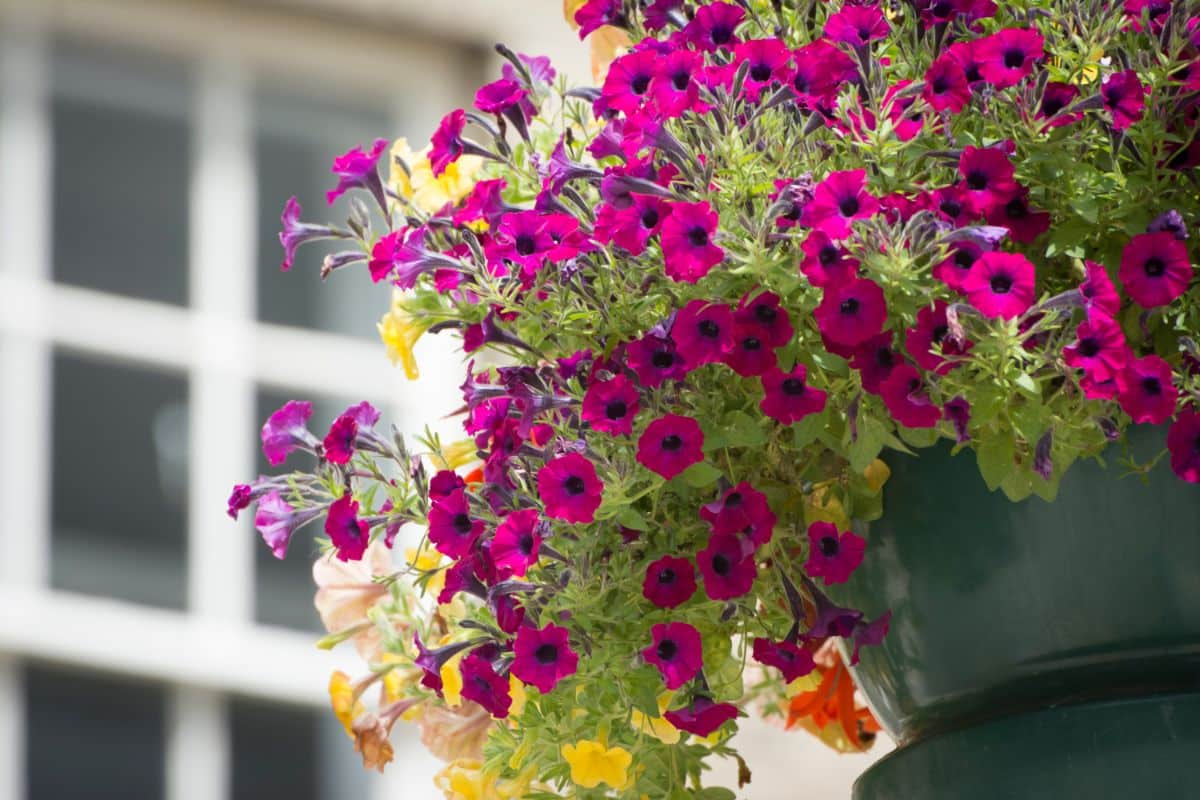
Wave petunias are long-season bloomers, and they can continue to flower from spring until the frost of fall. In fact, with season extension products, you may even be able to enjoy Wave petunias until late fall!
Wave petunias are prolific bloomers, so if your plants stop flowering, it’s a sure sign that something is amiss. Too little light, water, or fertilizer are often to blame if Wave petunias stop flowering. However, you can often get Wave petunia plants to flower again by adjusting their care and giving plants a light trim.
Yes! While Wave petunias do need to be watered regularly, overwatering petunia plants will lead to soggy soil and root rot. If your petunia leaves are starting to yellow and droop, you may be dealing with overwatered plants.
The best time to water petunia plants is in the early morning when temperatures are cool. Watering petunias and other plants, when the sun is high overhead will increase the chances that plant leaves may develop sun scorch or spotting. Conversely, watering plants late in the evening can make plants more vulnerable to mildew issues since water droplets on plant leaves won’t evaporate as quickly after dark.
Yes! Wave petunias are sun-loving plants that need at least 8 hours of full sun daily for proper growth and abundant blooms.
The Wave petunia is a newer, hybrid-type petunia plant that was especially developed for its prolific blooms and cold hardy nature. Compared to other varieties of petunias, Wave petunias often grow larger, and they have bigger flowers as well. If you’re looking to give your porch planters that “wow factor,” Wave petunias are THE petunias you need to be looking for!
Summary
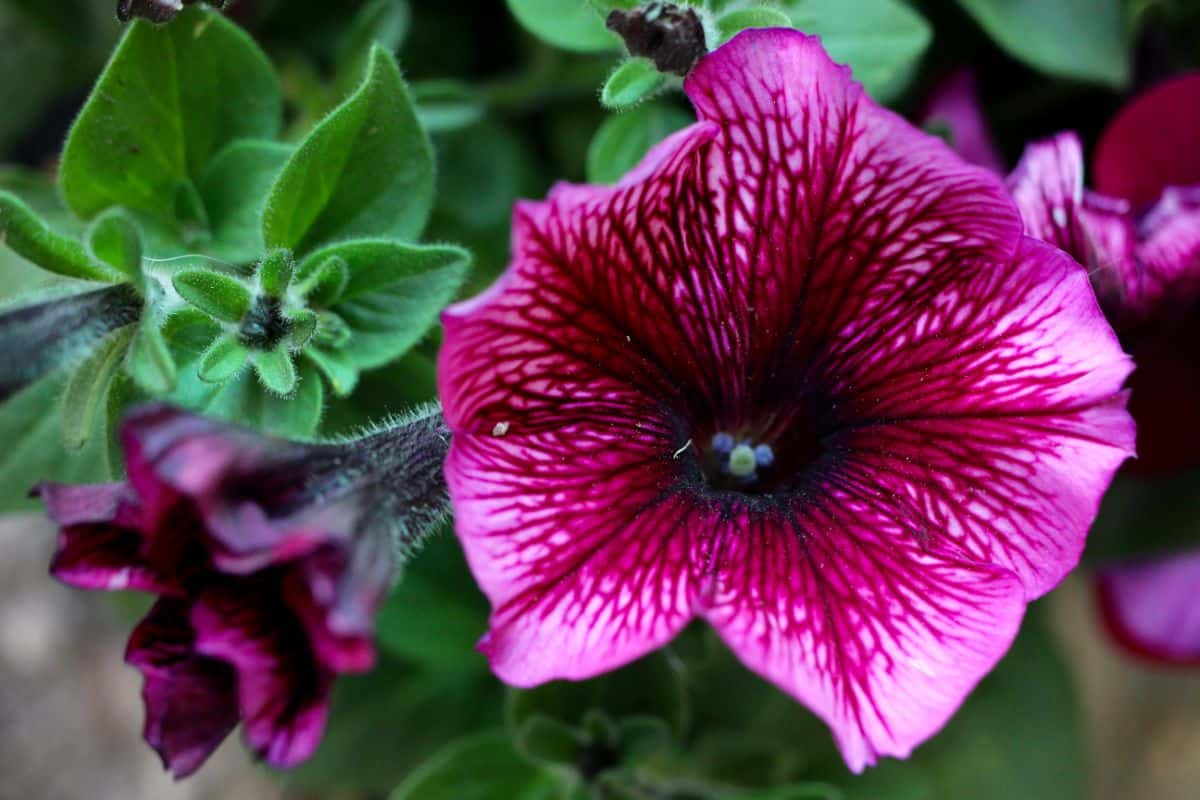
Whether you keep flowers in garden beds, window boxes, or hanging baskets, Wave petunias are some of the easiest plants to grow, and they blend in beautifully with other ornamentals, like impatiens and dusty miller. But beyond their aesthetic charm, Wave petunias are also prolific bloomers, and they flower more abundantly than other petunias as long as they receive the right balance of light, nutrients, and water.
So, if you’re looking for an easygoing plant that will fill up your garden with a rainbow of colors, why not try out some Wave petunias this year? These delightful and non-stop bloomers won’t disappoint!
For more tips on caring for petunia plants, be sure to check out our guide on growing petunias right here!

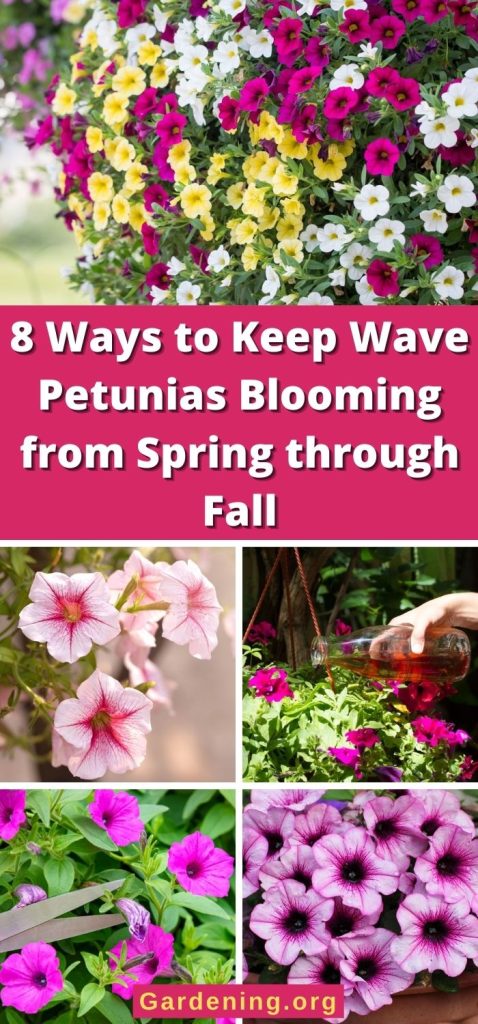
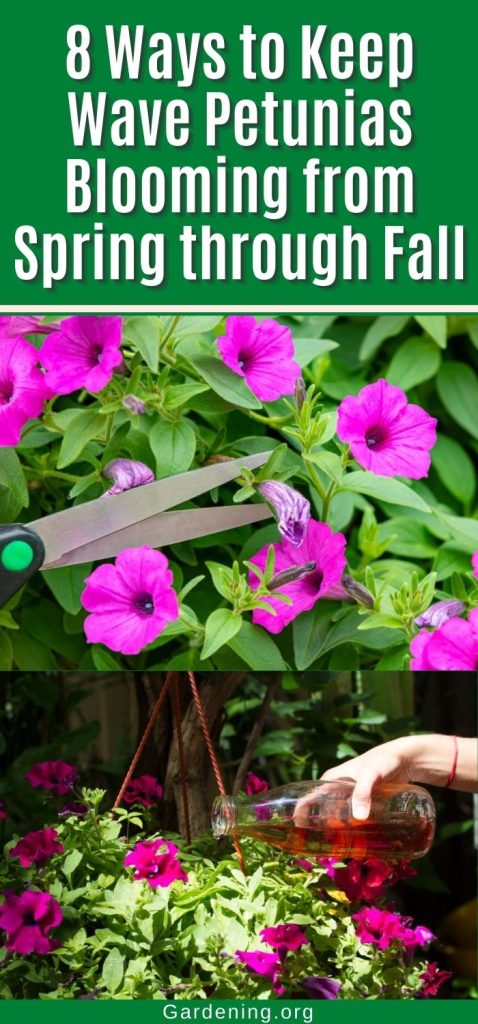

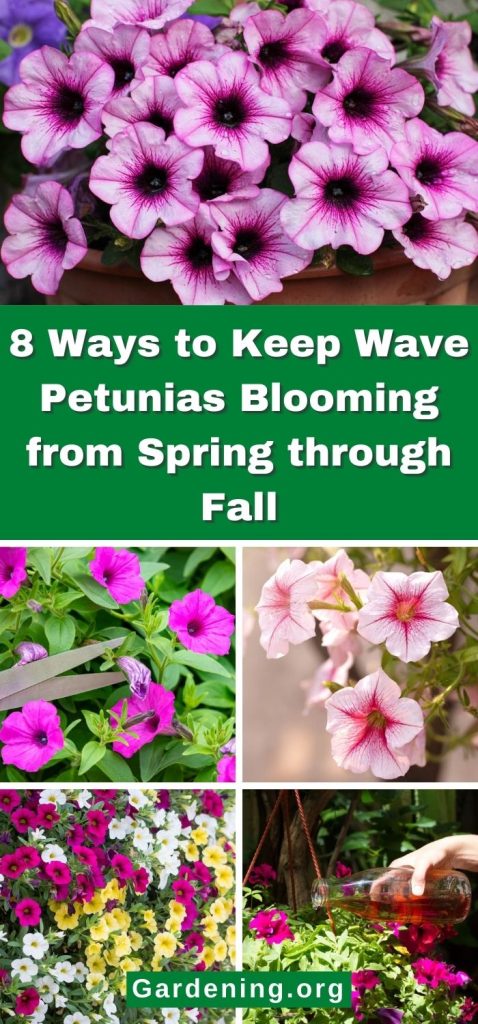




Leave a Reply